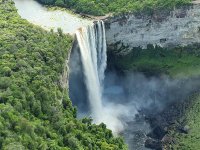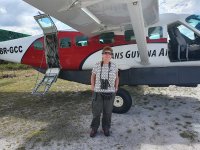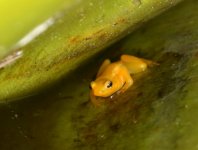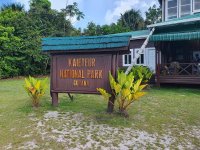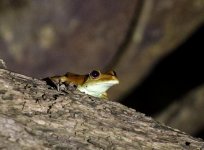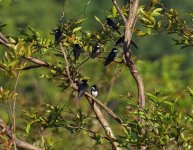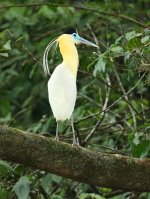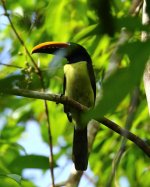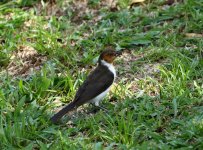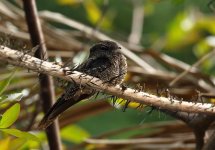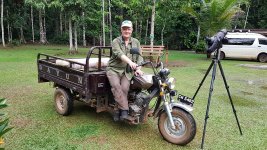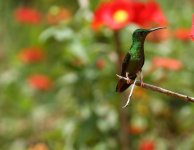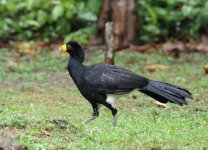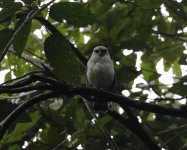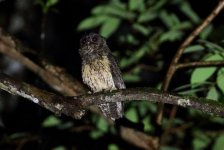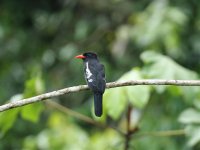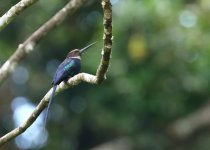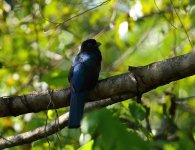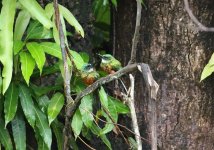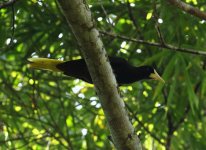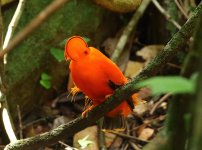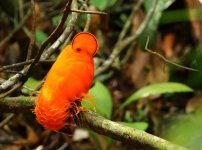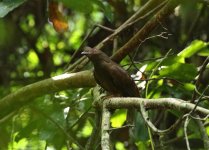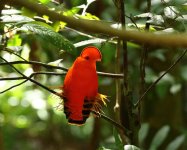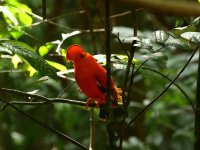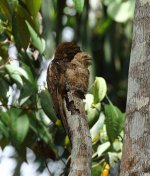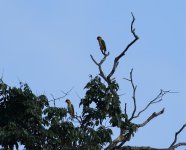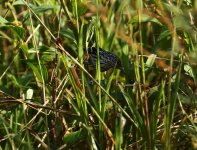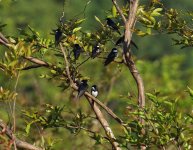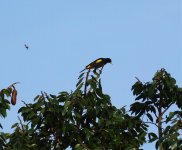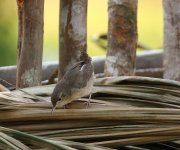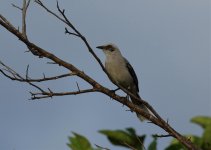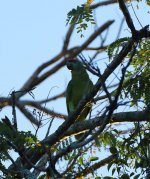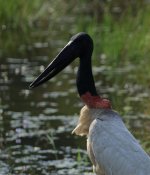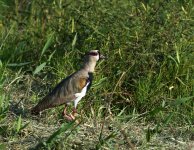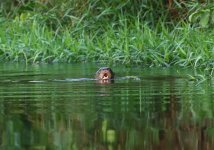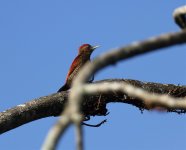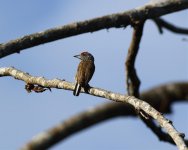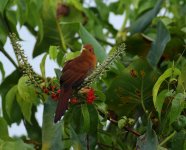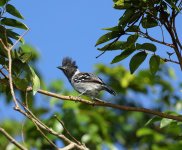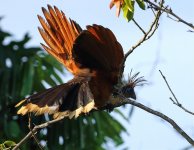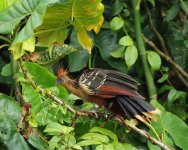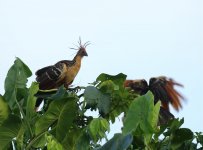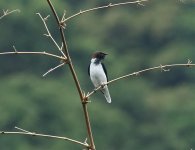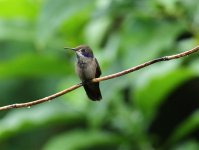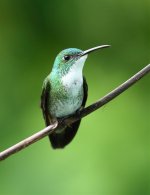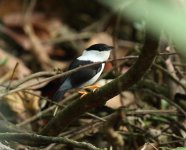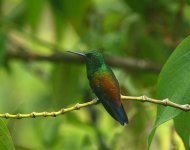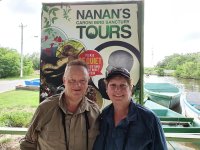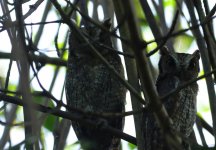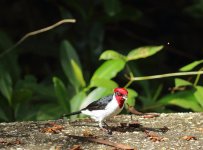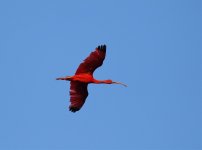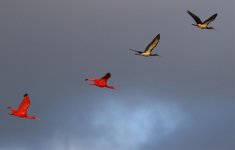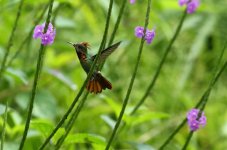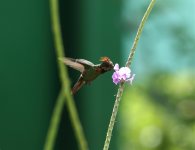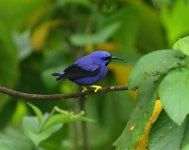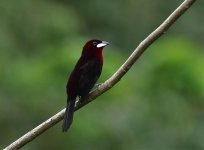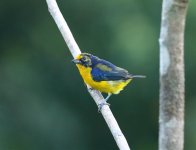Sarah has wanted to see Kaieteur Falls for many years and we had both wanted to stay at Asa Wright in Trinidad after staying at Pax and doing just a day visit there some 14 year ago.
Day 1
We flew to Trinidad from London Gatwick with BA and connecting flight with Caribbean on to Guyana. We were met on arrival by a Wilderness Explorers rep and transferred to Georgetown. Arriving when the CPL cricket was on (Guyana v Trinidad) we just made it through Georgetown before the cricket finished avoiding a major delay. Our hotel the Grand Coastal on the East Coast of Demerara, just minutes from the capital’s small Ogle airport was perfect for us. This hotel had good food and seemed to offer a safe and secure environment with excellent service and good accommodation along with a restaurant/bar, gym and pool.
Day 2
After breakfast, we met the trip organiser from Wilderness Explorer (Supriya – always nice to meet the person who has organised things) before being transferred to Ogle (official name Eugene F. Correia International Airport) to take a charter flight over the Demerara and Essequibo Rivers with hundreds of miles of unbroken tropical rainforest to land at Kaieteur Falls, the world’s highest free-falling waterfall.
The Falls, which were first seen by a European on 29th April 1870, are situated in the heart of Guyana on the Potaro River. The water of Kaieteur flows over a sandstone tableland into a deep gorge - a drop of 741 feet or around 5 times the height of Niagara Falls. Seeing these falls had been on Sarah’s bucket list for close on 20 years and largely this was why we were in Guyana rather than elsewhere. When you arrive the falls are almost completely uncommercialised with only 12 visitors on our plane and one other plane of 15 just about to leave and a few national park staff here, so less than 30 people and very unlike other places such as Iguassu, Niagara or Victoria falls.
Kaieteur also supports a unique micro environment with Tank Bromeliads, the largest in the world, in which the tiny Golden frog spends its entire life, also a chance of Guiana Cock- of-the-rock; these were our main targets but we only had around 2½ hours to find these and see the falls from various viewpoints before our flight back.
Luckily at the first view area the guide pointed out a bromeliad with a frog but it quickly disappeared, but when the others walked on I looked at similar plants and quickly found another Golden Frog to photograph. Unfortunately the Cock of the Rock was absent from the small lek and then the heavens opened so we rushed back to the shelter of the centre, we were actually OK about missing this bird as we knew were had further chances later, but one lady who was over-nighting here before heading to Surinam had it as her main target and was pretty upset at not seeing it and asked me what is sounded like, I played the call to her and immediately got a response from a bird in the nearby forest but we had to leave while our plane could make it out as further rain was coming in – hopefully after the rain the lady found the bird(s).
We also saw the famous flights of the Kaieteur Swifts or Makonaima Birds which nest under the shelf of rock hidden behind the curtain of falling water. To our eyes it appeared to be a mixed flock of at least three species, White-collared, White-chinned and Band Rumped Swifts. So quite a hurried visit but definitely worthwhile and our contingency of a last day reschedule if the plane didn’t go today wasn’t required.
At Ogle airport I made use of the ATM as inland it is cash only and Guianan Dollars are needed.
Day 3
Up early and back to airport and on to a small scheduled flight (capacity 13), we again fly over miles of tropical rainforest to land at Fair View Airstrip, good to see such minimal damage to the forest on the journey. You can only take 9KG of luggage each; so no scope, tripod or additional lenses on this trip. We also had to get weighed with our small rucksacks on so they knew the total weight of the plane, having done that a couple of German filmmakers then paid hundreds of dollars to get a few crates of camera gear on the little plane and it was filled to capacity.
The Iwokrama Rainforest is a vast wilderness of one million acres. This protected area was established as recently as 1996 as the Iwokrama International Centre for Rainforest Conservation and Development. The Iwokrama Forest is in the heart of one of four last untouched tropical forests of the world - The Guiana Shield of North-Eastern South America. Iwokrama was established as a living laboratory for tropical forest management because the unsustainable utilisation of these forests could result in the extinction of half the world's plant and animal species and unknown changes to global climate. Iwokrama is exceptional among conservation organisations because it joins with local people in every aspect of its work. From research to business, Iwokrama ensures local economic and social benefits from forest use and conservation. The Forest is in the homeland of the Makushi people, who have lived here and used the forest for thousands of years. People are a vital part of the ecosystem and most staff are local including guides.
The Iwokrama River Lodge is set overlooking the Essequibo River. Accommodation is in pleasant timber cabins with a veranda overlooking the river. Electricity is provided by a combination of solar and diesel generator systems. Unfortunately the satellite Wi-Fi was not working when we were here. We liked that meals were served buffet-style in the Fred Allicock dining hall, where we could chat with the rangers, admin and scientific staff and a couple of fellow birders.
We arrived just before lunch and agreed to explore the trails this afternoon with Marcie who has just been made a Senior Ranger and over lunch have a chat with the Lodge Manager on the work they do here. Iwokrama is home to many of our target bird species and we can’t wait to get going but content ourselves with some birding from the veranda. We see Swallow-winged Puffbird, Tropical Mockingbird, Silver-beaked Tanager and Chestnut-bellied Seedeater and at the start of the trail a couple of Red-legged Tinamou crossing.
Around three we get going and quickly see a Capuchin bird, unfortunately high in a tree so a disappointing photo, the next bird we saw well was another lifer in Spotted Antpitta but again despite really good views it just kept going behind the vegetation and refused to give up a photo, Grey-winged Trumpeter, Yellow-rumped Cacique and then a top target a Guianan Red Cotinga were all seen pretty well. Other birds that afternoon included Ruddy Ground Dove, Tropical Mockingbird, Black-eared Fairy, Rusty-margined Flycatcher, Palm Tanager and Scaled Pigeon.
After dark we set out on the river, in hope of finding animals and night birds. We quickly saw Black Caiman, also Spectacled Caiman before seeing a sleeping Osprey, some Fish-eating Bats and a really sought after Gladiator Tree Frog then a few Ladder-tailed Nightjars gave us a nice finish to a very good first day.
We discussed the next day and decided we would stay out all morning after an early breakfast to do the Island tour and the trek up Turtle Mountain rather than have breakfast in between trips.
Day 4
So just after first light we set off on the Essequibo River to circumnavigate nearby Indian House Island and were prepared for our hike. We spend lots of time on the river and on a small tributary as the birding was excellent with first Guianan Streaked Antwren, then Great Jacamar and Red-billed Toucan giving us three new birds, we also saw Amazon and Belted Kingfisher, Scarlet Macaw, Red-fanned Parrot, Greater Ani and Barred Antshrike before we saw Pied Lapwing, Black Skimmer, Large-billed Tern and Ladder-tailed Nightjar on a spiky branch overlooking a sandbank.
Then in an area overhanging the narrow tributary we had a stunning male Spangled Cotinga right above our head, a Golden-headed Manakin, White-crowned Manakin the much sought after Green Aracari and a beautiful Chestnut Woodpecker (elegans). On the return trip we also saw the Spangled Cotinga but I didn’t even manage a photo as some Crested Oropendula chased it off. On the boat trip to the landing area we added Crimson-crested Woodpecker, Green Ibis, Cocoi Heron, Yellow-billed Tern and a flock of Black-collared Swallows before finding a perched Ornate Hawk-Eagle.
The hike to Turtle Mountain isn’t very strenuous, a well-maintained trail winds through the forest before a couple of steep climbs up the mountain to its summit. It supposedly takes 1 3/4hrs to walk up the mountain but after 40 minutes we had barely gone a few hundred yards as Guianan Red Cotinga, Yellow-tufted Woodpecker, Black-throated Antshike (also a lifer for Marcie), Ferruginous-backed Antbird, Grey Antbird and White-crested Spadebill did their best to hold us up. There was also Blue-grey Tanager, Rufous-crowned Elaenia, Buff-breasted Wren and Black-tailed Tityra to delay us. We had a discussion and decide we would just take our time enjoying the birds and not worry if it was going to be too late (after 11.00) and therefore too hot to see anything in the open area at the top.
The birds kept coming with Wedge-billed Woodcreeper, Spot-tailed Antwren, Little Chacalaca, Green and Red Macaw, Ringed Woodpecker, Barred Antshrike, Black Nunbird[/B] and Coraya Wren occupying us and we tried at both rest points for Red and Black Grosbeak, unfortunately without any response. In the end we decided to come back down slowly rather than do the last climb. Seeing a beautiful Paradise Jacamar and then a Todd’s Antwren made the decision seem right for us.
We also did pretty well with monkeys seeing Wedge-capped Capuchin, Brown-bearded Sika and Black Spider Monkey.
After a late lunch we set out on a boat trip to visit Kurupukari Falls and to see the Amerindian petroglyphs, not a lot of bird activity just Green Honeycreeper, Blue-black Grassquit and Moriche Oriole added.
We then went on a drive through the forest in an area known for Jaguar sightings. No luck for us only some fresh tracks but having been lucky enough to see Jaguar in Brazil a few years ago not a disaster and we did add a few birds though Screaming Phia, Drab Water Tyrant, Purple-throated FruitCrow, Black-necked Aracari, Lineated Woodpecker, Blackish Nightjar and poor views of a male Crimson Topaz.
Other wildlife included Red-rumped Agouti and Brazilian Tapir which Marcie managed to call back across the road after it had crossed our path.
Day 1
We flew to Trinidad from London Gatwick with BA and connecting flight with Caribbean on to Guyana. We were met on arrival by a Wilderness Explorers rep and transferred to Georgetown. Arriving when the CPL cricket was on (Guyana v Trinidad) we just made it through Georgetown before the cricket finished avoiding a major delay. Our hotel the Grand Coastal on the East Coast of Demerara, just minutes from the capital’s small Ogle airport was perfect for us. This hotel had good food and seemed to offer a safe and secure environment with excellent service and good accommodation along with a restaurant/bar, gym and pool.
Day 2
After breakfast, we met the trip organiser from Wilderness Explorer (Supriya – always nice to meet the person who has organised things) before being transferred to Ogle (official name Eugene F. Correia International Airport) to take a charter flight over the Demerara and Essequibo Rivers with hundreds of miles of unbroken tropical rainforest to land at Kaieteur Falls, the world’s highest free-falling waterfall.
The Falls, which were first seen by a European on 29th April 1870, are situated in the heart of Guyana on the Potaro River. The water of Kaieteur flows over a sandstone tableland into a deep gorge - a drop of 741 feet or around 5 times the height of Niagara Falls. Seeing these falls had been on Sarah’s bucket list for close on 20 years and largely this was why we were in Guyana rather than elsewhere. When you arrive the falls are almost completely uncommercialised with only 12 visitors on our plane and one other plane of 15 just about to leave and a few national park staff here, so less than 30 people and very unlike other places such as Iguassu, Niagara or Victoria falls.
Kaieteur also supports a unique micro environment with Tank Bromeliads, the largest in the world, in which the tiny Golden frog spends its entire life, also a chance of Guiana Cock- of-the-rock; these were our main targets but we only had around 2½ hours to find these and see the falls from various viewpoints before our flight back.
Luckily at the first view area the guide pointed out a bromeliad with a frog but it quickly disappeared, but when the others walked on I looked at similar plants and quickly found another Golden Frog to photograph. Unfortunately the Cock of the Rock was absent from the small lek and then the heavens opened so we rushed back to the shelter of the centre, we were actually OK about missing this bird as we knew were had further chances later, but one lady who was over-nighting here before heading to Surinam had it as her main target and was pretty upset at not seeing it and asked me what is sounded like, I played the call to her and immediately got a response from a bird in the nearby forest but we had to leave while our plane could make it out as further rain was coming in – hopefully after the rain the lady found the bird(s).
We also saw the famous flights of the Kaieteur Swifts or Makonaima Birds which nest under the shelf of rock hidden behind the curtain of falling water. To our eyes it appeared to be a mixed flock of at least three species, White-collared, White-chinned and Band Rumped Swifts. So quite a hurried visit but definitely worthwhile and our contingency of a last day reschedule if the plane didn’t go today wasn’t required.
At Ogle airport I made use of the ATM as inland it is cash only and Guianan Dollars are needed.
Day 3
Up early and back to airport and on to a small scheduled flight (capacity 13), we again fly over miles of tropical rainforest to land at Fair View Airstrip, good to see such minimal damage to the forest on the journey. You can only take 9KG of luggage each; so no scope, tripod or additional lenses on this trip. We also had to get weighed with our small rucksacks on so they knew the total weight of the plane, having done that a couple of German filmmakers then paid hundreds of dollars to get a few crates of camera gear on the little plane and it was filled to capacity.
The Iwokrama Rainforest is a vast wilderness of one million acres. This protected area was established as recently as 1996 as the Iwokrama International Centre for Rainforest Conservation and Development. The Iwokrama Forest is in the heart of one of four last untouched tropical forests of the world - The Guiana Shield of North-Eastern South America. Iwokrama was established as a living laboratory for tropical forest management because the unsustainable utilisation of these forests could result in the extinction of half the world's plant and animal species and unknown changes to global climate. Iwokrama is exceptional among conservation organisations because it joins with local people in every aspect of its work. From research to business, Iwokrama ensures local economic and social benefits from forest use and conservation. The Forest is in the homeland of the Makushi people, who have lived here and used the forest for thousands of years. People are a vital part of the ecosystem and most staff are local including guides.
The Iwokrama River Lodge is set overlooking the Essequibo River. Accommodation is in pleasant timber cabins with a veranda overlooking the river. Electricity is provided by a combination of solar and diesel generator systems. Unfortunately the satellite Wi-Fi was not working when we were here. We liked that meals were served buffet-style in the Fred Allicock dining hall, where we could chat with the rangers, admin and scientific staff and a couple of fellow birders.
We arrived just before lunch and agreed to explore the trails this afternoon with Marcie who has just been made a Senior Ranger and over lunch have a chat with the Lodge Manager on the work they do here. Iwokrama is home to many of our target bird species and we can’t wait to get going but content ourselves with some birding from the veranda. We see Swallow-winged Puffbird, Tropical Mockingbird, Silver-beaked Tanager and Chestnut-bellied Seedeater and at the start of the trail a couple of Red-legged Tinamou crossing.
Around three we get going and quickly see a Capuchin bird, unfortunately high in a tree so a disappointing photo, the next bird we saw well was another lifer in Spotted Antpitta but again despite really good views it just kept going behind the vegetation and refused to give up a photo, Grey-winged Trumpeter, Yellow-rumped Cacique and then a top target a Guianan Red Cotinga were all seen pretty well. Other birds that afternoon included Ruddy Ground Dove, Tropical Mockingbird, Black-eared Fairy, Rusty-margined Flycatcher, Palm Tanager and Scaled Pigeon.
After dark we set out on the river, in hope of finding animals and night birds. We quickly saw Black Caiman, also Spectacled Caiman before seeing a sleeping Osprey, some Fish-eating Bats and a really sought after Gladiator Tree Frog then a few Ladder-tailed Nightjars gave us a nice finish to a very good first day.
We discussed the next day and decided we would stay out all morning after an early breakfast to do the Island tour and the trek up Turtle Mountain rather than have breakfast in between trips.
Day 4
So just after first light we set off on the Essequibo River to circumnavigate nearby Indian House Island and were prepared for our hike. We spend lots of time on the river and on a small tributary as the birding was excellent with first Guianan Streaked Antwren, then Great Jacamar and Red-billed Toucan giving us three new birds, we also saw Amazon and Belted Kingfisher, Scarlet Macaw, Red-fanned Parrot, Greater Ani and Barred Antshrike before we saw Pied Lapwing, Black Skimmer, Large-billed Tern and Ladder-tailed Nightjar on a spiky branch overlooking a sandbank.
Then in an area overhanging the narrow tributary we had a stunning male Spangled Cotinga right above our head, a Golden-headed Manakin, White-crowned Manakin the much sought after Green Aracari and a beautiful Chestnut Woodpecker (elegans). On the return trip we also saw the Spangled Cotinga but I didn’t even manage a photo as some Crested Oropendula chased it off. On the boat trip to the landing area we added Crimson-crested Woodpecker, Green Ibis, Cocoi Heron, Yellow-billed Tern and a flock of Black-collared Swallows before finding a perched Ornate Hawk-Eagle.
The hike to Turtle Mountain isn’t very strenuous, a well-maintained trail winds through the forest before a couple of steep climbs up the mountain to its summit. It supposedly takes 1 3/4hrs to walk up the mountain but after 40 minutes we had barely gone a few hundred yards as Guianan Red Cotinga, Yellow-tufted Woodpecker, Black-throated Antshike (also a lifer for Marcie), Ferruginous-backed Antbird, Grey Antbird and White-crested Spadebill did their best to hold us up. There was also Blue-grey Tanager, Rufous-crowned Elaenia, Buff-breasted Wren and Black-tailed Tityra to delay us. We had a discussion and decide we would just take our time enjoying the birds and not worry if it was going to be too late (after 11.00) and therefore too hot to see anything in the open area at the top.
The birds kept coming with Wedge-billed Woodcreeper, Spot-tailed Antwren, Little Chacalaca, Green and Red Macaw, Ringed Woodpecker, Barred Antshrike, Black Nunbird[/B] and Coraya Wren occupying us and we tried at both rest points for Red and Black Grosbeak, unfortunately without any response. In the end we decided to come back down slowly rather than do the last climb. Seeing a beautiful Paradise Jacamar and then a Todd’s Antwren made the decision seem right for us.
We also did pretty well with monkeys seeing Wedge-capped Capuchin, Brown-bearded Sika and Black Spider Monkey.
After a late lunch we set out on a boat trip to visit Kurupukari Falls and to see the Amerindian petroglyphs, not a lot of bird activity just Green Honeycreeper, Blue-black Grassquit and Moriche Oriole added.
We then went on a drive through the forest in an area known for Jaguar sightings. No luck for us only some fresh tracks but having been lucky enough to see Jaguar in Brazil a few years ago not a disaster and we did add a few birds though Screaming Phia, Drab Water Tyrant, Purple-throated FruitCrow, Black-necked Aracari, Lineated Woodpecker, Blackish Nightjar and poor views of a male Crimson Topaz.
Other wildlife included Red-rumped Agouti and Brazilian Tapir which Marcie managed to call back across the road after it had crossed our path.




